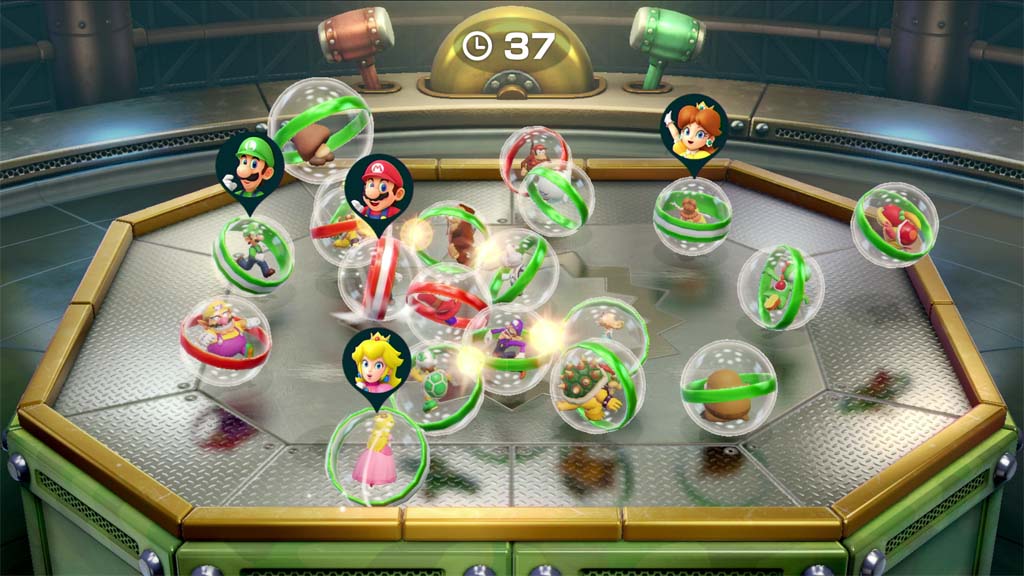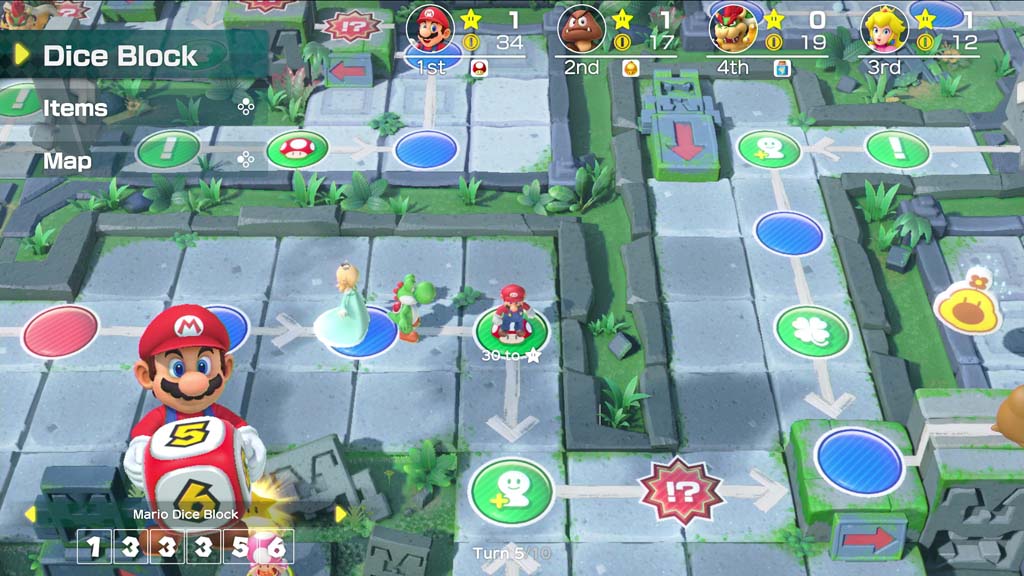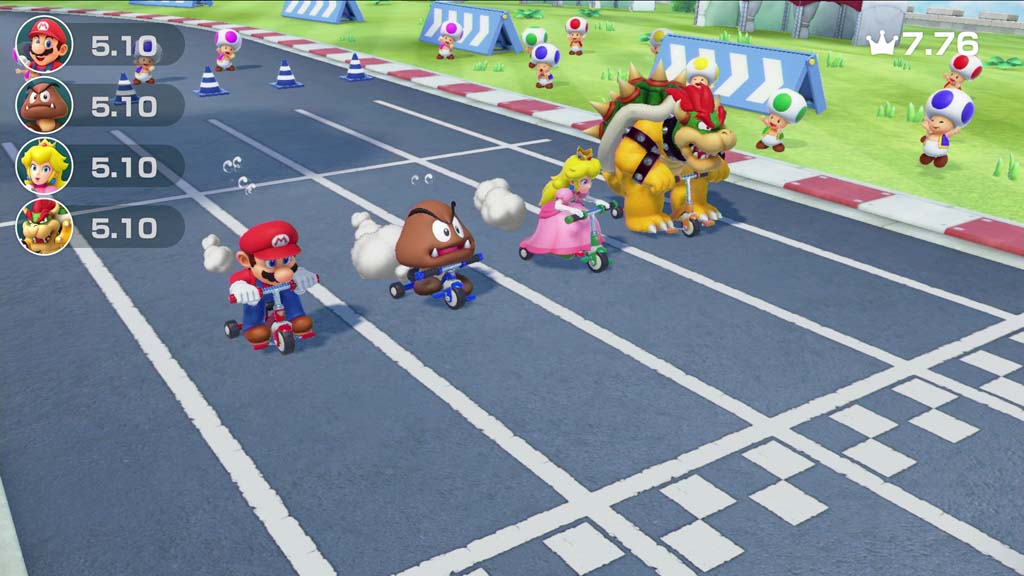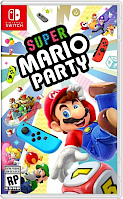Review: Super Mario Party

Posted 03 Oct 2018 at 13:00 by Ashley Jones
Super Mario Party, as Birdo will tell you, is the 11th instalment of partying plumbers. It’s a series that was announced at the same time as Smash Bros and both franchises seem to be going for a ‘best of’ collection on the Switch.
Unlike Smash Ultimate, Super Mario Party doesn’t feature every character, minigame and stage from the franchise’s past, in fact it features all completely new mini-games. However it does feel like Nintendo reflected on the series and considered what worked and tried to cram it all into one package. Nintendo describe it as a “complete refresh” and you can certainly sense that.
The game features a multitude of modes designed to allow for flexibility in the number of players and the length of time you want to play; cooperative, competitive, short bursts, longer games etc. Many will dive into the ‘main’ game and spend most of their time there, but Nintendo has been wise to consider the fact people may well take this on the go and want shorter games.

As with other titles in the franchise it’s more fun when you play with others. You can play against/with AI but the joy comes from people you know. There is a single-player mode inviting you to challenge yourself to twists on the mini-games (completed in x time, get y score etc), but it isn’t unlocked until you’ve unlocked all the mini-games showcasing the multiplayer-focus.
The main Mario Party mode is bound to be the biggest draw and Nintendo offers a handful of boards, each with their own unique theme and twist - Gold Rush Mine features King Bomb-Omb who may well explode in your face for example, while a trap on Whomp’s Domino Ruins will see you running away from a boulder and back down the board. Those buying Super Mario Party for the main party mode will be disappointed to hear however there are only four boards.
After some experimentation in the last few titles Super Mario Party returns to the classic board action that made the franchise popular. Players must move around the board, collect coins, buy (or steal) stars and try and get the highest stars and coin combos using a combination of luck and skill. Bad luck spaces, item shops, surprise events and opportunities for theft ensure that player positions can change quickly, and the bonus stars after the game is up also means the winner isn’t decided until the last moments.
Super Mario Party’s brand new feature gives each character their own particular die as well as a standard six-sided die. The character’s die reflect themselves; Mario is more safe and ‘all around’ while a character like Bowser has two sides dedicated to losing coins but some with a bigger move score. You’re able to choose between the two, but it does add an interesting element of risk.

Allies returns, a feature added in more recent games, joining you either because you land on an Ally Space or you get an Ally Phone. Once you call upon an ally, which is randomised, you can then also use their die and they will also join you on the board and can roll a one or a two, which is added to your roll. Certain mini-games also make use of these allies and players without are at a disadvantage.
Nintendo has created 80 brand new mini games for Super Mario Party, although they retain the classic 2 vs 2, 1 vs 3 or 4 player options and are chosen at random. Before you start any of the games you now get the chance to practice the game, playing it outright if you wish.
The mini-games use a mixture of the face buttons and motion controls, which brings me onto one of my gripes with Super Mario Party... The requirement to use motion controls means it only works with detached Joy-Cons. This obviously makes a lot of sense in opening it up to play anywhere gaming and gives you two controllers from the offset, but it means you’re limited to just using it. If you’re not a fan of gesture-based gaming you’re probably going to want to miss this. Nintendo has also taken advantage of HD Rumble to create some minigame experiences that are truly unique to the Switch.
Aside from the main Mario Party mode there are a variety of modes to keep you busy. The new cooperative River Survival mode sees you hurling down some rapids, each person controlling an oar, trying to reach the end before your time runs out. To extend your time you need to burst balloons that launch cooperative minigames. The quicker you complete them, the more time gets added. It’s a welcome change and a nice way to play a bit of Mario Party in a shorter space of time, but the limited number of minigames means you end up repeating some during the same playthrough.
Another franchise first is online play, of sorts. An online version of the main mode was obviously never going to exist, but Online Mario-thon is more than just a tortured pun, it’s an opportunity to play in five random minigames to compete for the highest score and get the best rank you can. This mode was unavailable to test at the point of review. But you can play this mode offline too and it was enjoyable but the main audience would be those striving for high scores.

The Sound Stage mode is a collection of rhythm based minigames (like a miniature Rhythm Heaven game). Partner Paty is a 2-vs-2 mode that combine dice rolls, but allow for independent movement, in a grid-based board. I found this latter mode particularly enjoyable, as it creates an interesting twist on the formula if you’re playing with a friend as it encourages shared strategies.
There’s also a sticker mode if you’re into stickers. Birdo gives you some by answering basic questions while others can be purchased using the in-game currency that you earn as you play.
Finally, the biggest and most impressive new feature is Toad’s Rec Room. Demoed during the game’s unveiling this mode allows you to use two Switch consoles (undocked) and essentially ‘combine’ them. For example in ‘Banana, Split’ images of bananas are split across the two screens and you need to line up the two bananas that match and draw a line across both screens. In ‘Shell Shocked Deluxe’ you choose a map layout, place two Switch consoles next to each other in your desired manner (stacked on top, in an L-shape etc) and then swipe to create an opening.
The most amazing thing about this mode is how simple it feels, but how impressive it is technically. This mode feels like Nintendo experimenting with new ways they can use the Switch and hopefully it is the start of some interesting experiments from them. Much like how Wii Sports sold the potential of the Wii, I feel like this mode can sell the marvel of the Switch.
Nintendo has done an impressive job with Super Mario Party. The franchise has suffered over the last few iterations as they’ve tried to find new ideas for it, often at the expense of what players wanted in the first place, but this is truly a fantastic multiplayer game. The single player modes are entertaining too but it will never be better than stealing stars from friends.
There’s some minor niggles to be had (limited boards in the main Mario Party mode, repeated cut scenes, AI stupidity when you have to rely on them, Donkey Kong’s disturbingly white grin) but it is another in a long line of great local co-op titles on the Switch. If you often have friends or family around then it is a great addition to your library, providing you think your relationships can stand the competition.
N-Europe Final Verdict
A great multiplayer game and a return to form for a series that essentially started a whole new genre. A whole host of new minigames and modes means there is plenty to enjoy and it's a game you'll keep revisiting.
- Gameplay5
- Playability5
- Visuals3
- Audio3
- Lifespan4
Final Score
7
Pros
Wide variety of modes
Fantastic multiplayer experience
Toad's Rec Room is a great technological showcase
Cons
Lack of boards
Repetitive cut scenes























